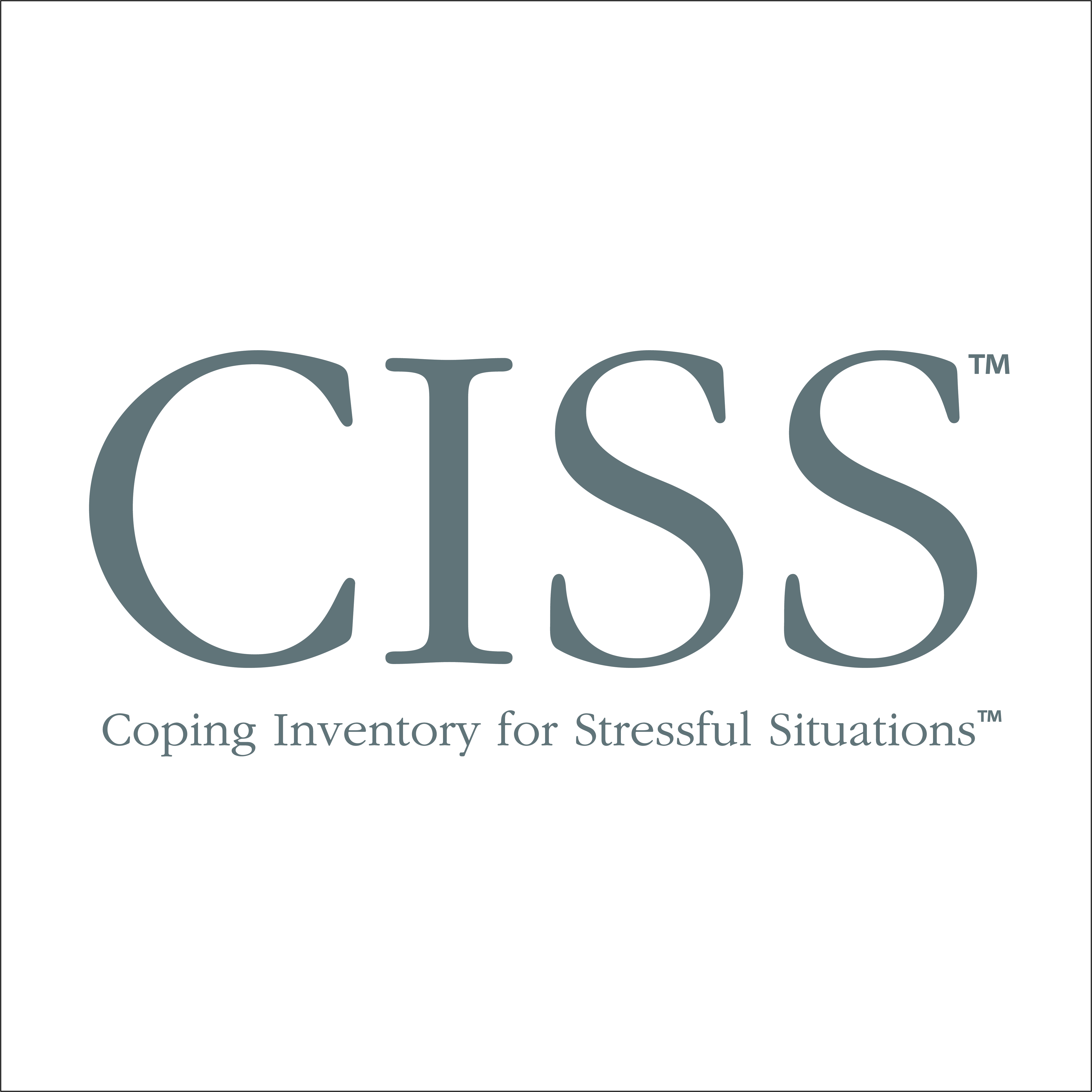
CISS™
Coping Inventory for Stressful Situations™
Filters
The Coping Inventory for Stressful Situations™ (CISS™) measures three types of coping styles. Coping styles play an important role in physical and psychological well being. This role is especially evident when individuals are confronted with negative or stressful life events. The way people cope with illness is an important factor in their recovery and subsequent adjustment. The CISS represents a new direction in understanding the important interaction between stressful events and the ways in which we deal with them.
Age
- Adolescent: 13 to 18
- Adult: 18 & Older
Administration Type
- Self
Administration Time
- 10 Minutes
Number of Items
- Adult: 48
- Adolescent: 48
Qualification Level
- B
Format(s)
- Handscored
Reading Level
- 8th Grade
- Helps you determine the preferred coping style of an individual
- Contributes to your overall understanding of the relationship between that individual's coping style and his or her personality
- Provides useful results for treatment and intervention planning
- Task-Oriented Coping
- Emotion-Oriented Coping
- Avoidance-Oriented Coping
- Distraction
- Social Diversion
CISS: Adolescent
The adolescent version of the CISS is suitable for individuals between the ages of 13 and 18. It uses gender-specific adolescent normative data.
CISS: Adult
The adult version of the CISS is suitable for individuals 18 years of age and older.
CISS: Situation-Specific Coping (CISS: SSC)
The CISS: SSC is a 21-item measure for adults. It examines a designated event, such as a change in social situation, change in a relationship, or a personal conflict.
The CISS includes separate adolescent and adult forms. Both are available in handscored format using MHS QuikScore™ forms. The CISS: Situation-Specific Coping measure is also available. This component focuses on a specified event or situation. Each form takes approximately 10 minutes to complete.
Reliability
Overall, the alpha coefficients are highly satisfactory across the normative groups. It is important to note that the alphas are slightly lower in the psychometric sample than in the normal sample, although still highly reliable.
In general, test-retest reliabilities were moderate to high for male and female undergraduates. The Task and Emotion scales had the highest reliabilities, above or equal to .68 for both genders.
The avoidance scale and the two subscales of Distraction and Social Diversion had moderate reliabilities, ranging from .51 to .60.
Validity
In the undergraduate sample, low non-significant correlations were found between the M-C and the CISS scales of Task, Avoidance, Distraction, and Social Diversion for both male and female undergraduates.
The combined sample for the CISS consisted of 2,898 individuals and included general population adolescents and adults, college students, correctional populations, psychiatric inpatients, and various occupational groups.
